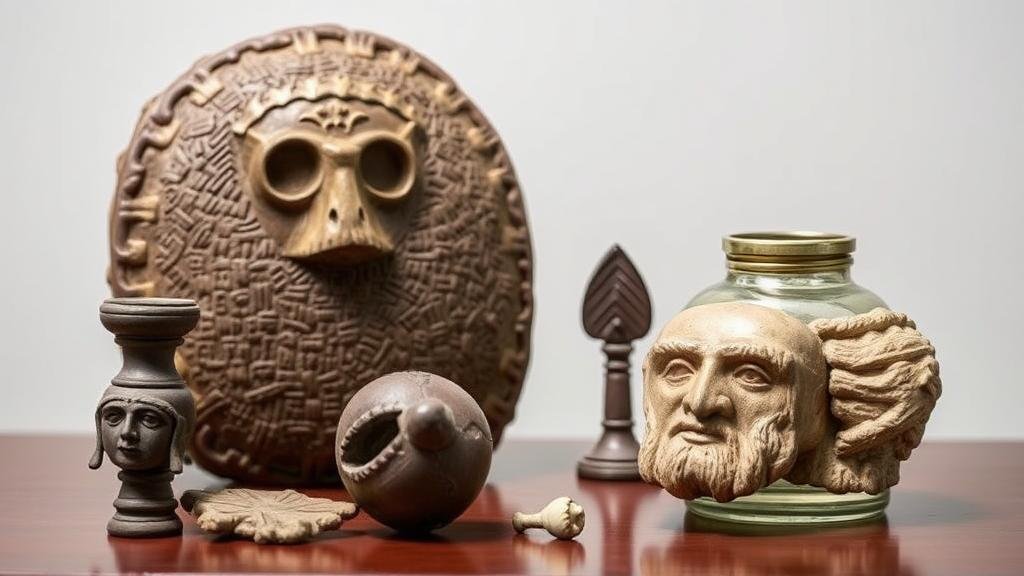Selling Artifact Replicas as Educational or Decorative Items
Selling Artifact Replicas as Educational or Decorative Items
The practice of creating and selling artifact replicas serves an important role in the fields of education, decoration, and cultural preservation. Artifacts from various civilizations provide unique insights into human history, art, and culture. But, genuine artifacts are often too fragile or expensive to access. So, replicas emerge as valuable alternatives that can be utilized in multiple contexts. This article explores the significance of selling artifact replicas, their applications, market trends, and ethical considerations involved in this niche sector.
The Importance of Artifact Replicas
Artifact replicas can serve multiple functions, from educational tools to decorative pieces, making them accessible for different audiences.
- Educational Tools: Replicas offer students, educators, and enthusiasts tangible connections to past civilizations. For example, replicas of ancient Greek pottery can be utilized in classrooms to illustrate artistic techniques and historical narratives.
- Decorative Items: Many consumers also purchase artifact replicas for aesthetic reasons. Items like Egyptian sarcophagi or Aztec masks can enhance the ambiance of a home or office while sparking interest in cultural history.
Market Demand and Trends
The market for replica artifacts has seen considerable growth in recent years, fueled by an increasing interest in cultural appreciation and educational content. According to a study conducted by IBISWorld, the museum industry alone, which heavily utilizes replicas for exhibitions, has grown at an annual rate of 2.4% from 2015 to 2020. This trend reflects a broader consumer appetite for educational merchandise and home decor that tells a story.
Also, the rise of online platforms has expanded access to these items, allowing businesses to reach a global audience. E-commerce sites such as Etsy and Amazon feature numerous vendors specializing in artifact replicas, promoting a diverse array of products from different cultures around the world.
Types of Artifact Replicas
The types of replicas available in the market are diverse and cater to various preferences and budgets. Below are some popular categories:
- Historical Replicas: These include items like Roman gladiator helmets or Viking swords, often made from durable materials such as metal or resin, and are highly detailed for authenticity.
- Artistic Replicas: Replicas of famous artworks or sculptures, such as Michelangelo’s David, can be found in various sizes and materials, allowing collectors to obtain stunning representations.
- Cultural Replicas: Items such as Native American pottery or African tribal masks are produced to honor and reflect the cultural heritage from which they originate.
Case Studies of Successful Replica Sellers
Several businesses have successfully tapped into the market for artifact replicas, illustrating effective strategies for promotion and distribution.
- The British Museum Shop: This outlet sells a wide range of replicas, including items associated with their exhibitions. The shop effectively combines education with consumption, enabling visitors to take a piece of history home.
- Ancient Resource: A specialized retailer focusing on quality replicas from all over the globe, Ancient Resource’s success stems from its commitment to authenticity and detail, appealing to collectors and educators alike.
Ethical Considerations in Selling Replicas
While the commercial aspect of selling replica artifacts is significant, ethical considerations must also be addressed. integrity of cultural representations is paramount. Here are several concerns that sellers need to evaluate:
- Cultural Sensitivity: Sellers should ensure that the replicas they offer respect the culture from which they originate and do not exploit or misrepresent cultural symbols.
- Transparency in Sourcing: Clear communication regarding the methods of replication, and the materials used can build trust with consumers, contributing to a responsible marketplace.
Actionable Takeaways
For those looking to engage in the selling of artifact replicas, consider the following steps:
- Research Your Market: Understand who your target audience is and what types of replicas are in demand.
- Prioritize Quality: Invest in high-quality materials and craftsmanship to ensure that your replicas accurately reflect the original artifacts.
- Build an Ethical Brand: Promote transparency in your business practices and respect cultural backgrounds, fostering a connection with customers that goes beyond the sale.
To wrap up, selling artifact replicas serves not only as a commercial opportunity but also as a means of cultural appreciation and educational empowerment. By understanding market trends and navigating ethical considerations, businesses can thrive while respecting the rich history from which these artifacts derive.



